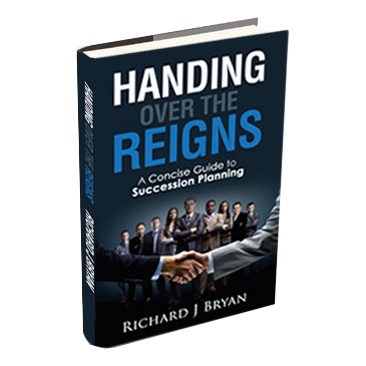You can feel it at work: that subtle drag against your company’s forward momentum. That dead weight resisting change and growth for your business. But how do you identify the actual roadblocks? How can you pinpoint what’s holding you back?
First, expect to scrutinize your company through three lenses: variety, honesty, and objectivity. These three lenses provide the perspective you will need to recognize what’s actually going on—not just what your company’s vision, mission, and values say should be going on.
Got those lenses on? Then let’s go hunting for your roadblocks.
Use Multiple Tools for Diagnosis
No doctor would assess a complicated medical condition using only one test. In the same way, you are wise to diagnose your company’s health using a variety of tools. You’re probably familiar with—and perhaps have put off using—some of the following:
- Leadership interviews
- Employee surveys or comment forms
- Customer feedback (online or in person)
- Supplier comments
All these sources can contribute valuable data you can analyze for unhealthy patterns. They will be especially valuable if those providing the information feel safe being honest. So when you solicit feedback, make sure you have created an environment where even negative comments are accepted without repercussions.
Next, go further in your “testing.” Those actively collected bits of input are helpful, but they may not give you the whole picture. You also need to be an analytical observer of everyday practices
Observe Everyday Practices
You can learn a lot about the roadblocks to change and growth in your company by carefully studying your everyday activities. Pay close attention to the dynamics in play during these common events:
- Meetings—with the board, the managers, the employees, and suppliers. Is everyone being treated respectfully? Do people leave the meeting with clarity around shared goals? Are meetings run in alignment with your stated company culture? Are meetings productive? If not, why not?
- Making decisions. Which voices get heard, and which get silenced? Who gave up trying to be heard a long time ago? Why? When and by whom do your stated core values get ignored during decision-making? Are decisions still focused on intended objectives?
- On-the-floor activities. How well do daily interactions propel your company toward your objectives? Where do communications or processes stumble on the path to enacting change? Is there a broken link in one of more of your systems? A bottleneck to progress among your people?
It is easy to say you’ve got a solid training process, and that your core values and business objectives have been clearly laid out. They’re even posted on a wall somewhere. But are they being lived out? From top to bottom of the company, every day of the week, in every decision, across every interaction, do you see your people truly acting on those values and objectives? Or is there a roadblock of resistance that is holding up the change needed for growth
Trace the Source
Far too often, in the companies I’ve coached, the kind of observation and diagnosis described here eventually point to a problem near the top. Toxic culture is more likely to trickle down than up. You, too, may find out you’ve got a few rotten apples on your leadership team. So I encourage you to muster the courage to look closely at your leaders. I understand that especially for a family-owned company, this can become quite uncomfortable. Yet the health of your business demands it.
Here’s one way to tackle that task.
I have my CEO clients create a “scorecard” for each position on the leadership team, including their own. A scorecard sets out what A-Player performance would look like in each role—with specific goals and core values. The scorecard gets reviewed quarterly in order to recognize and praise A-Players and to coach B-Players in areas for improvement. The C-Players are ultimately exited from the organization. The process is robust, effective, and simple.
Simple, that is, when you have the confidence to act decisively on the data set before you. Unfortunately, for many business owners, taking decisive action is the sticking point.
If that’s what you’re experiencing, the next tip may be just what you need to hear.
Bring in Objective Help
Enlisting the help of an objective, outside partner in identifying roadblocks can fling open windows of insight. It often takes fresh eyes to spot the real obstacles to growth. An outside observer can detect red flags in data that you, as someone familiar with “the way we do things,” would otherwise label “commonplace” and “normal.”
When roadblocks become normalized, they will continue to impede change and inhibit growth. They’ll simply stay hidden in plain sight. This is why objective help may be exactly the boost you need to solve your problem. In fact, you may even want to bring in outside assistance right at the outset, as you plan your approach to gathering the informative data mentioned earlier.
Having an objective partner at your elbow can also help you avoid the “paralysis by analysis” that could set in once you’ve collected your data. Confronted by an array of information, you may struggle to discern which lever to pull to effect the right change. An outside helper then serves as an impartial, cool-headed guide and a goad to action. When you waver, they are there to keep the ball rolling toward healthy change.
I often get asked whether I would have been able to turn around my loss-making family business if I hadn’t hired Frank as my mentor. My answer? Probably not. At the time, I was only 28 years of age and didn’t have the experience to know what to do next—in other words, which levers to pull. What I did have was the emotional intelligence and the humility required to go seek the help I needed.
You, too, can bring in a coach from outside to help you squarely face the unhealthy patterns and people that stand blocking your growth. In addition to clarifying data analysis and setting out action steps, a coach can also be an objective voice in those conversations you expect to be difficult.
Choose Your Route to Roadblock Removal
There are a multitude of tools to choose from and a community of world-class business coaches to turn to for advice and support. I chose to become a Metronomics coach because they have a proven, repeatable playbook for navigating change and building a team that can grow a business consistently year after year.
This system, combined with my own business experience, helps me provide top value to my clients. I hold up the mirror for them, uncovering the blind spots or roadblocks that exist—even those hidden well beneath the surface. Together, we unearth the obstacles that are slowing down the pace of change and ultimately impacting the ability of their business to grow.
The only thing that is certain for business today is that change is constant. I like to think of it as evolution rather than revolution, because as a business grows its people also need to continue to grow their skills and knowledge. To help your company remove roadblocks, implement positive change, and achieve long-term growth, consider bringing in an external coach to help lead the way.
Imagine the difference you’ll experience once your business is free to grow.
Sign up for our mailing list to be notified of upcoming events. You will also receive a free copy of Richard’s eBook “Top 7 Business Succession Planning Tips.”
Related Topics:
Are You Ready to Put AI to Work Growing Your Business?
The 7 Fundamentals of Business Turnaround: Strategies for Success
Yes, Sustained Business Growth is Possible: What You Need to Do Starting Today


